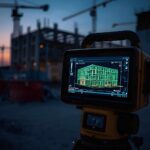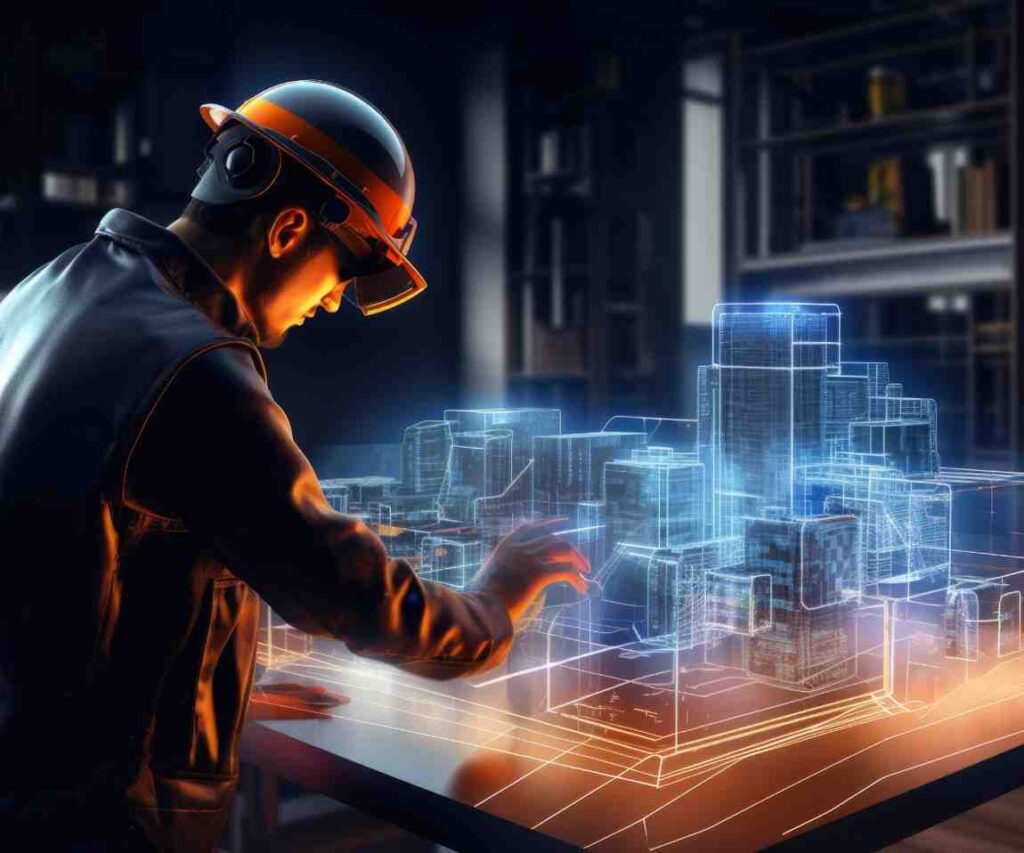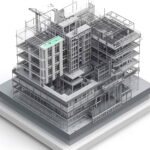

The architecture, engineering, and construction (AEC) industry has seen a digital shift from hand-drawn 2D plans to Building Information Modeling (BIM), which integrates time, cost, sustainability, safety, and operations into one intelligent process.
From 2D drafting to 10D BIM, every dimension unlocks deeper insights, enabling stronger collaboration, efficiency, and smarter decisions throughout the entire project journey.
Let’s explore how BIM’s evolution and higher dimensions enable smarter, more sustainable projects.
What Is BIM?
Building Information Modeling (BIM) creates and manages a digital representation of a physical asset. It contains both geometry and data, enabling all stakeholders—designers, engineers, contractors, and facility managers—to collaborate more effectively.
Stat: “According to Dodge Data & Analytics, 61% of contractors report reduced project errors due to BIM, and 55% experience less rework.”
From 2D to 10D: Breaking Down the Dimensions of BIM
2D BIM – Drafting and Documentation
Before BIM, 2D CAD drafting was the standard. Designers created floor plans, sections, and elevations as separate drawings. While useful, 2D drafting often caused coordination issues, especially on complex projects.
Limitations:
* Prone to misalignment between drawings
* No depth or visual realism
* Time-consuming manual updates
Fact: “Projects relying only on 2D drafting face a 35% higher risk of cost overruns due to coordination errors (NBS).”
3D BIM – Visualization and Coordination
3D BIM transformed the industry by replacing flat drawings with intelligent, three-dimensional models. These models contain real-world geometry and data, enabling teams to visualize and coordinate designs more effectively.
Benefits:
* Enhanced visualization
* Clash detection between disciplines
* Better collaboration across teams
Stat: “Autodesk reports that 3D BIM can reduce coordination errors by up to 40%.”
4D BIM – Time and Scheduling
4D BIM adds the time dimension to the model, enabling simulation of construction sequences and scheduling. It allows teams to visualize how a project will be built over time.
Benefits:
* Improved project timelines
* Reduced on-site conflicts
* Real-time progress tracking
Fact: “4D BIM improves scheduling accuracy by over 30% (McGraw-Hill Construction).”
5D BIM – Cost Estimation and Budgeting
With 5D BIM, cost data is linked to every element in the model, allowing for accurate quantity take-offs and real-time budget tracking.
Benefits:
* Transparent cost forecasting
* Dynamic updates when design changes
* Early identification of budget risks
Stat: “5D BIM can result in up to 20% cost savings through better cost control (Trimble).”
6D BIM – Sustainability and Energy Analysis
6D BIM incorporates environmental performance data into the model, helping teams evaluate energy consumption, carbon impact, and material efficiency.
Benefits:
* Energy simulation and optimization
* Lifecycle carbon footprint analysis
* Support for green building certifications
Stat: “USGBC notes that green buildings designed with BIM can reduce operational costs by up to 30%.”
7D BIM – Facility and Asset Management
7D BIM focuses on operations and maintenance after construction is complete. Facility managers use the model to track assets, schedule maintenance, and optimize building performance.
Benefits:
* Complete digital twin for facility management
* Reduced maintenance downtime
* Better long-term cost planning
Fact: “IFMA reports that 7D BIM can reduce facility breakdowns by 35%.”
8D BIM – Safety Planning
8D BIM incorporates the safety dimension by integrating health and safety data into the model, thereby minimizing risks during both construction and operation.
Benefits:
* Hazard identification in advance
* Safer construction sequencing
* Compliance with safety regulations
Insight: “Studies show BIM-based safety planning can reduce on-site accidents by 15–25%.”
9D BIM – Lean Construction and Waste Reduction
9D BIM emphasizes lean construction principles, utilizing data to minimize waste, enhance efficiency, and optimize resource utilization throughout the project.
Benefits:
* Reduced material wastage
* Streamlined workflows
* Higher productivity
Fact: “Lean BIM adoption can cut construction waste by up to 25% (Lean Construction Institute).”
10D BIM – Industrialized Construction and Future Readiness
10D BIM integrates industrialized construction and advanced analytics, linking BIM with AI, IoT, and automation for predictive maintenance and real-time building performance monitoring.
Benefits:
* Automated decision-making
* Integration with smart sensors and IoT
* Predictive analytics for asset performance
Stat: “MarketsandMarkets predicts that BIM integrated with IoT will be a $16.8 billion market by 2030”
Why the Evolution from 2D to 10D BIM Matters
The leap from 2D drafting to 10D BIM isn’t just about technology—it’s about transforming how we design, build, operate, and sustain our built environment. Each dimension adds value:
| BIM Level | Core Focus | Key Benefit |
| 2D | Drafting | Basic documentation |
| 3D | Visualization | Better design clarity |
| 4D | Time | Scheduling accuracy |
| 5D | Cost | Financial control |
| 6D | Sustainability | Energy efficiency |
| 7D | Facility Management | Long-term asset care |
| 8D | Safety | Risk reduction |
| 9D | Lean | Waste minimization |
| 10D | Future Integration | Smart, connected buildings |
Insight: “The global BIM market is expected to grow from $7.9 billion in 2023 to $15.8 billion by 2030 (Allied Market Research), with higher-dimensional BIM driving adoption.”
The Future Is Multidimensional
As the AEC industry adopts digital twins, AI, and IoT, the integration of higher-dimensional BIM will become the standard. Stepping beyond 3D to 10D enables better decision-making, sustainable outcomes, and enhanced ROI for stakeholders.
Your BIM Expertise Partner
At ASE Structure Design, we bring together deep industry expertise with tailored BIM Modeling Services, supporting clients across telecom, infrastructure, and utilities. Our tailored approach meets the unique needs of every sector, ensuring smooth integration from 3D modeling through 10D BIM to maximize efficiency, reduce risks, and streamline operations.
Contact us today to schedule a free consultation and discover how higher-dimensional BIM can drive measurable results for your next project.
Latest News



